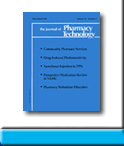 |
 |
Pill Burden in Low-Income Patients with Metabolic Syndrome and Diabetes
Steven T Boyd, David M Scott, and Amy M Pick
To request full article click here.
BACKGROUND: While pill burden can harm or overwhelm patients, very little is known about pill burden in patients with diabetes or metabolic syndrome.
OBJECTIVE: To determine the pill burden level in low-income patients with metabolic syndrome who were enrolled in a diabetes study that was trying to achieve recommended targets of therapy.
Methods: A prospective chart review was performed on 145 patients enrolled in a diabetes study at Siouxland Community Health Center. Patients were considered to have metabolic syndrome if they had 3 or more of the following clinical risk factors: (1) type 2 diabetes mellitus; (2) dyslipidemia (triglycerides >150 mg/dL or high-density lipoprotein cholesterol <40 mg/dL for men and <50 mg/dL for women); (3) hypertension (blood pressure >130/80 mmHg or receiving antihypertensive medication); and (4) obesity (body mass index >30 kg/m2). Pill burden was defined as the average number of prescribed administrations per day. Inhalers, ophthalmics, and glucose meters were counted by number of puffs, drops, or finger sticks per day. Average hemoglobin A1C (A1C) level was collected at baseline and at 12 months.
Results: The results showed that 85.5% of patients in the diabetes study were classified as having metabolic syndrome. The total number of administrations per day was analyzed for 124 eligible patients. Patients had an average baseline pill burden of 8.5 and A1C of 8.6%. After being enrolled in the study for 12 months, patients’ average pill burden endpoint increased to 13.1 and A1C was reduced to 7.0%. At the end of the study, 37.9% of patients were prescribed dual therapy for glucose control: 79% on antihypertensives, 70% on lipid-lowering agents, and 65% taking aspirin.
CONCLUSIONS: Diabetes patients with metabolic syndrome are prescribed multiple drug therapies to control diabetes and other metabolic abnormalities. In this study, we concluded that the average pill burden was 13.1 in patients with glucose-controlled diabetes and metabolic syndrome.
J Pharm Technol 2009;25:297-302.
To request full article click here.
|
|
|
||
|

